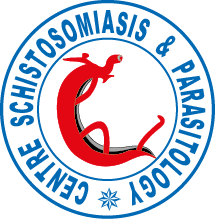A comparison of the sensitivity and fecal egg counts of the McMaster egg counting and Kato-Katz thick smear methods for soil-transmitted helminths.
Abstract
BACKGROUND:
The Kato-Katz thick smear (Kato-Katz) is the diagnostic method recommended for monitoring large-scale treatment programs implemented for the control of soil-transmitted helminths (STH) in public health, yet it is difficult to standardize. A promising alternative is the McMaster egg counting method (McMaster), commonly used in veterinary parasitology, but rarely so for the detection of STH in human stool.
METHODOLOGY/PRINCIPAL FINDINGS:
The Kato-Katz and McMaster methods were compared for the detection of STH in 1,543 subjects resident in five countries across Africa, Asia and South America. The consistency of the performance of both methods in different trials, the validity of the fixed multiplication factor employed in the Kato-Katz method and the accuracy of these methods for estimating ‘true’ drug efficacies were assessed. The Kato-Katz method detected significantly more Ascaris lumbricoides infections (88.1% vs. 75.6%, p<0.001), whereas the difference in sensitivity between the two methods was non-significant for hookworm (78.3% vs. 72.4%) and Trichuris trichiura (82.6% vs. 80.3%). The sensitivity of the methods varied significantly across trials and magnitude of fecal egg counts (FEC). Quantitative comparison revealed a significant correlation (Rs >0.32) in FEC between both methods, and indicated no significant difference in FEC, except for A. lumbricoides, where the Kato-Katz resulted in significantly higher FEC (14,197 eggs per gram of stool (EPG) vs. 5,982 EPG). For the Kato-Katz, the fixed multiplication factor resulted in significantly higher FEC than the multiplication factor adjusted for mass of feces examined for A. lumbricoides (16,538 EPG vs. 15,396 EPG) and T. trichiura (1,490 EPG vs. 1,363 EPG), but not for hookworm. The McMaster provided more accurate efficacy results (absolute difference to ‘true’ drug efficacy: 1.7% vs. 4.5%).
CONCLUSIONS/SIGNIFICANCE:
The McMaster is an alternative method for monitoring large-scale treatment programs. It is a robust (accurate multiplication factor) and accurate (reliable efficacy results) method, which can be easily standardized.
